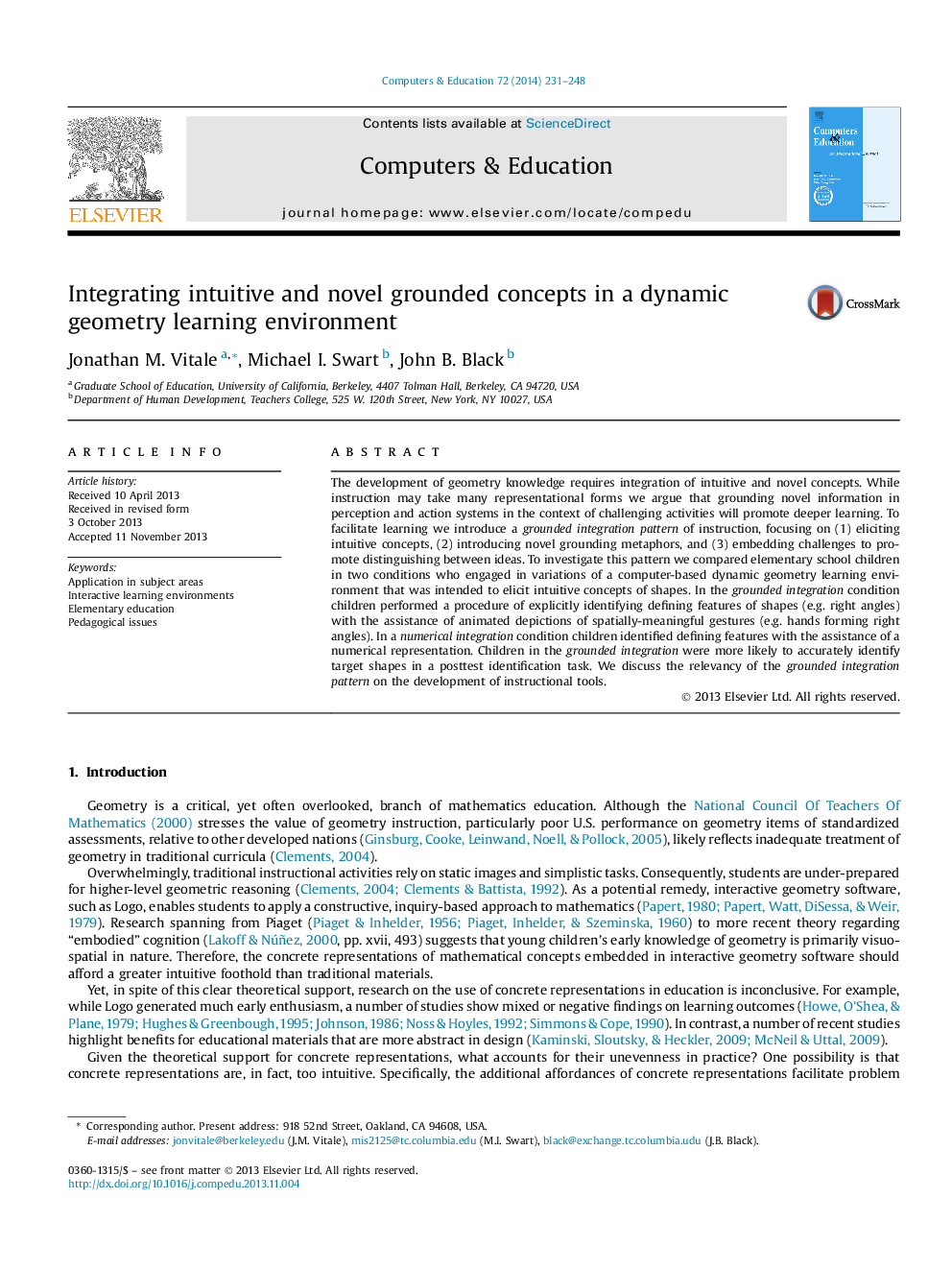| Article ID | Journal | Published Year | Pages | File Type |
|---|---|---|---|---|
| 6835293 | Computers & Education | 2014 | 18 Pages |
Abstract
The development of geometry knowledge requires integration of intuitive and novel concepts. While instruction may take many representational forms we argue that grounding novel information in perception and action systems in the context of challenging activities will promote deeper learning. To facilitate learning we introduce a grounded integration pattern of instruction, focusing on (1) eliciting intuitive concepts, (2) introducing novel grounding metaphors, and (3) embedding challenges to promote distinguishing between ideas. To investigate this pattern we compared elementary school children in two conditions who engaged in variations of a computer-based dynamic geometry learning environment that was intended to elicit intuitive concepts of shapes. In the grounded integration condition children performed a procedure of explicitly identifying defining features of shapes (e.g. right angles) with the assistance of animated depictions of spatially-meaningful gestures (e.g. hands forming right angles). In a numerical integration condition children identified defining features with the assistance of a numerical representation. Children in the grounded integration were more likely to accurately identify target shapes in a posttest identification task. We discuss the relevancy of the grounded integration pattern on the development of instructional tools.
Related Topics
Social Sciences and Humanities
Social Sciences
Education
Authors
Jonathan M. Vitale, Michael I. Swart, John B. Black,
